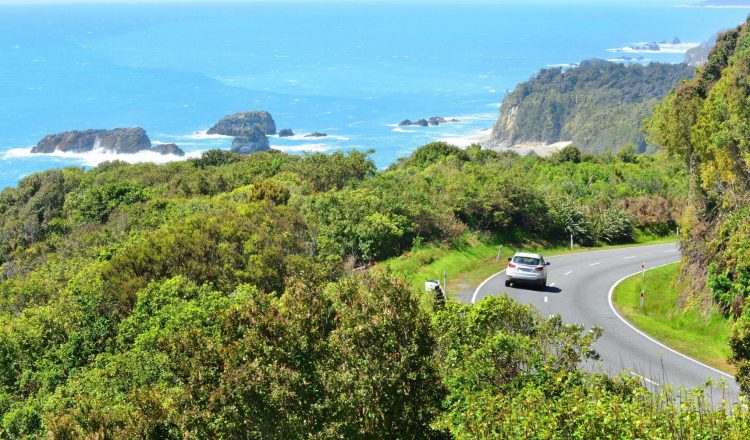分享道路
与骑自行车的人分享道路
骑自行车的人在路上更容易受到伤害,因为他们受到的保护比其他道路使用者少。因此,你应该保持警惕并在靠近他们时小心驾驶。
与骑自行车的人安全共享道路的重要提示:
- 通过时请特别小心并放慢速度。他们可能需要意外移动,没有机会表达他们的意图。
- 转动和停止时,请在足够的时间内清楚地指出。
- 了解你的盲点,尤其是驾驶货车、卡车或公共汽车时,然后再次检查骑自行车者。
- 再看一下十字路口。循环比其他车辆小,可能不容易看到。
- 避免在交叉路口转身之前超越自行车手。
- 开放的道路上经过骑自行车者时要小心。慢下来,理想情况下,在你和骑自行车者之间留下至少 1.5 米的空间。
- 在路边打开车门之前,请检查后视镜并看看肩膀。
- 降低可见性时,放慢速度并保持警惕。骑自行车的人往往很难看见,在雨中或光线不足的条件下更是如此。
在
在
与行人分享道路
平均每年有 36 名行人在新西兰道路上死亡,1000 名行人受伤。如果驾驶员在使用我们的道路时更加小心,其中许多伤亡是可以避免的。无论何时你在方向盘后,请注意行人。
- 随时准备在学校、公共汽车站和人行口附近停下来。
- 驾驶过停放的车辆时要小心。行人可能会在没有警告的情况下出去
- 无论您在道路的哪一侧,在经过或前往停止让孩子上下的校车时,您都必须放慢到 20 公里/小时。
- 当心老年人或残疾人。
- 在路边摊位和停放的供应商附近特别小心。访问这些地方的行人可能会忘记在过马路时注意交通。
人行横道是一个标有白色条纹的道路区域。行人和使用移动设备(例如电动轮椅和类似设备)和轮式休闲车(如滑板和脚推式踏板车)的人使用。
一些过境点在中间提高了岛屿,创造了行人可以停下来的 “避难所”。这些对于横跨宽双向道路或多车道路的行人来说很有帮助,因为它们允许他们一次穿过一个交通方向。
当你开车前往人行过路口时,你会看到十字路口前的人行过路标,在过境口处看到黑白极。灯杆安装有荧光橙色圆盘或夜间闪烁的圆形黄色灯。白色钻石通常在过境前在道路上涂上,白色的限制线显示您在哪里停下来。
当来到人行过境点时:
- 放慢速度,随时准备为任何步入或登上过路口的行人停下来 —— 这还包括显然在等待使用过境点的人
- 如果过境点中间没有升高的交通岛,请停下来让位于过境点的任何部分的行人
- 如果十字路口中间有一个升高的交通岛,请停下来让位于你半路上的行人
- 等到行人在你面前穿过并且没有车辆之后再继续(请参阅第 145 页了解让路的定义)。
与拖拉机共享道路
你有时会在新西兰道路上看到拖拉机和其他农场或建筑机械。由于它们很大,行驶速度通常比其他车辆慢,因此在靠近车辆时需要特别小心。
-
一
- 旦你看到前面的拖拉机就开始放慢速度,并注意任何警告信标。
- 在拖拉机后面驾驶时要耐心等待 —— 以缓慢速度行驶几分钟比碰撞风险好。
- 通过时要非常小心,只有在安全和合法的情况下才能通过
- 请记住,拖拉机通常负荷较宽或长,这可能会使通过更加困难。
- 特别小心刚停止的拖拉机,因为它们实际上可能即将转动。
与卡车和公共汽车共享道路
以下卡车和公共汽车:
- 请记住两秒钟的规则-过于紧密地跟踪将限制你的能见度,减少你停下来的时间,并可能会让你进入卡车或公共汽车司机的盲点。
- 在潮湿的天气中,将您的跟踪距离增加到四秒钟。这将使您远离从公共汽车或卡车轮上喷洒任何可能降低能见度的水,并且还会让您有更多时间停下来。
- 车和卡车的司机通常在车辆的后面和侧面都有大盲点,因此最好将车辆放在足够远的地方,以便在车辆的侧后视镜中看到它是个好主意。这将让卡车或公共汽车司机知道你在那里。
公共汽
超车卡车和公共汽车
由于卡车或公共汽车的通过时间比通过汽车需要几秒钟的时间,所以务必确保前面有充足的清晰道路才能安全通过而不超过限速。
迎面而来的卡车和巴士:
当驾驶过迎面而来的卡车或公共汽车(朝相反方向行驶)时,司机应保持对方向盘的严格控制,以抵御任何空气扰动的影响。请记住,卡车和其他大型车辆在弯道和十字路口行驶时占用更多空间,并且可能并不总是完全停留在自己的车道上。

















































